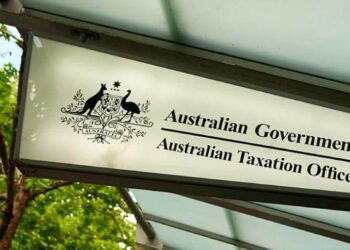In a recent technical update, IOOF senior technical manager Janet Manzanero-Caruana said that there are different strategic outcomes need to be considered when paying death benefits directly. This can especially be the case for super death benefits to be paid directly to a non-tax dependant or through the deceased person’s estate.
“Super death benefits can be paid directly as lump sums to your deceased client’s dependants for super purposes (superannuation dependant) or their legal personal representative (LPR) under a binding nomination, at trustee’s discretion or in accordance with the super fund’s trust deed,” Ms Manzanero-Caruana said.
“The LPR is the executor of the deceased’s estate or the administrator of the estate if the deceased died intestate. If paid to the deceased’s LPR, the death benefit lump sum becomes part of the deceased estate, which is distributed to beneficiaries, including those who are not superannuation dependants.
“Generally, the super fund trustee can pay death benefits only to superannuation dependants and the LPR. Super death benefit lump sums are tax-free to tax dependants, regardless of tax components of the benefit.
“However, for those who are not tax dependants, for instance, adult children or siblings, the taxable component of the lump sum is assessable. Tax offsets apply to limit the tax on the taxable component.
“The tax outcomes for non-tax dependants will depend on whether the super fund trustee makes the payment directly to them or through the deceased estate. It may also impact on any income-tested concessions they are entitled to receive or create tax obligations, such as Division 293 tax.”
Ms Manzanero-Caruana said that BDBNs in favour of non-tax dependants may not always be a good strategy where the client does not anticipate a claim on their estate. This approach does not provide flexibility in distributing death benefits tax effectively and can impact the recipient’s income-tested benefits.
“Super death benefits paid indirectly to non-tax dependants via the deceased estate may be more beneficial. Apart from the Medicare levy not applying, it may allow the beneficiary to retain benefits that are subject to income testing,” she noted.
“On the other hand, where your client anticipates a potential claim on their estate, paying death benefits directly to intended beneficiaries may provide better protection.”
Death benefit lump sum paid via deceased estate
The super fund trustee will pay the death benefit lump sum to the LPR (via the deceased estate) without deducting any tax. Ms Manzanero-Caruana said that the LPR is liable for any tax payable on the taxable component to the extent it benefits non-tax dependants.
That portion of the taxable component is included in the deceased estate’s assessable income, which is taxed at individual tax rates. However, tax offsets apply, limiting tax rates on the taxable component to 15 per cent or 30 per cent.
“The deceased estate does not pay the Medicare levy nor the Medicare levy surcharge; however, it is not eligible for the low-income tax offset and the low and middle-income tax offset,” she said.
“The LPR distributes the benefit to intended beneficiaries after paying tax, according to the deceased client’s will, or where the client dies intestate according to state or territory law. As the benefit has been assessed to the LPR, it is not assessable to the recipient.”
Death benefit lump sum paid directly to non-tax dependant
A super death benefit paid directly to a beneficiary is not an asset of the deceased estate and generally is not subject to claims on the deceased estate (however, notional estate provisions exist in NSW), according to Ms Manzanero-Caruana.
“Where the deceased expects to have claims against their estate (e.g. family or creditors), paying the death benefit directly to intended beneficiaries can help protect the benefit,” she explained.
“Where the beneficiary is a non-tax dependant, the super trustee deducts withholding tax from the tax components of the lump sum.
“Tax deducted by the super fund trustee is not a final tax. The taxable component of the lump sum is included in the non-tax dependant’s assessable income, which may be reduced by allowable deductions.”
Taxable income is taxed at individual tax rates; however, tax offsets apply to ensure the tax paid on the taxable component does not exceed the rates.
“The Medicare levy and the Medicare levy surcharge can apply, depending on income and private health insurance arrangements. A tax credit representing tax withheld by the super fund trustee will reduce the final tax.”
Furthermore, practitioners would also need to consider the loss of concessions and increased tax obligations in addition to the amount of tax paid on the death benefit.
Death benefit paid through LPR
The benefit of paying super death benefits intended for non-tax dependants through the LPR is that the taxable component is assessed to the deceased estate rather than to the beneficiary. In certain situations, Ms Manzanero-Caruana observed this might help the beneficiary retain certain income-tested benefits and concessions.
Furthermore, the deceased estate does not pay the Medicare levy and the Medicare levy surcharge, or the LPR may, subject to the provisions in the will, have more flexibility in paying benefits more tax effectively to beneficiaries.
“However, a death benefit paid via the deceased estate may be subject to claims by eligible persons. Payments from the estate can also be delayed,” she added.
“The benefits of paying death benefits directly to beneficiaries are generally the death benefit will not be included in claims against the deceased’s estate (except for ‘notional estate’ provisions in NSW).
“Death benefits may be also paid by the super trustee earlier and with fewer complications with a valid, binding death benefit nomination. The benefit is more likely to pass to the intended beneficiaries, and family conflicts also may be avoided.
“However, any taxable component increasing the beneficiaries’ taxable income may impact on any income-tested concessions they enjoy.”


